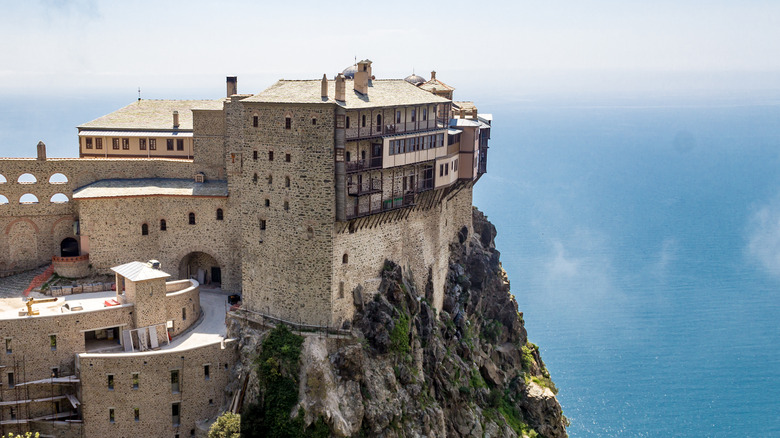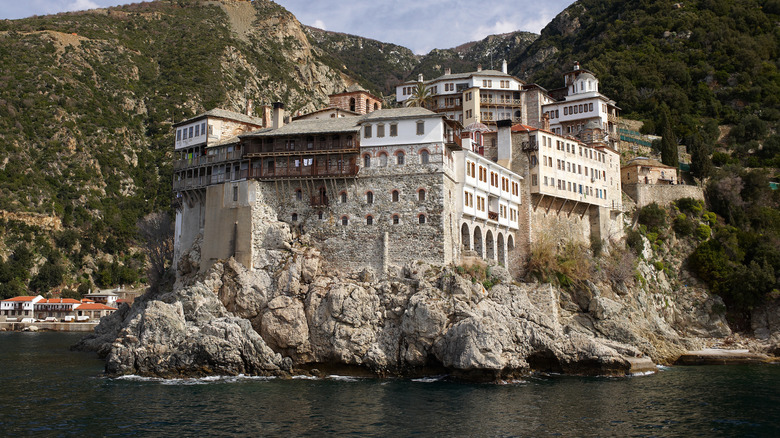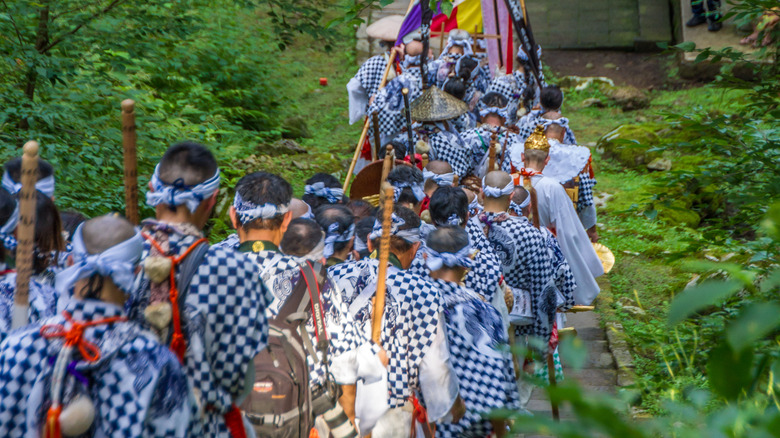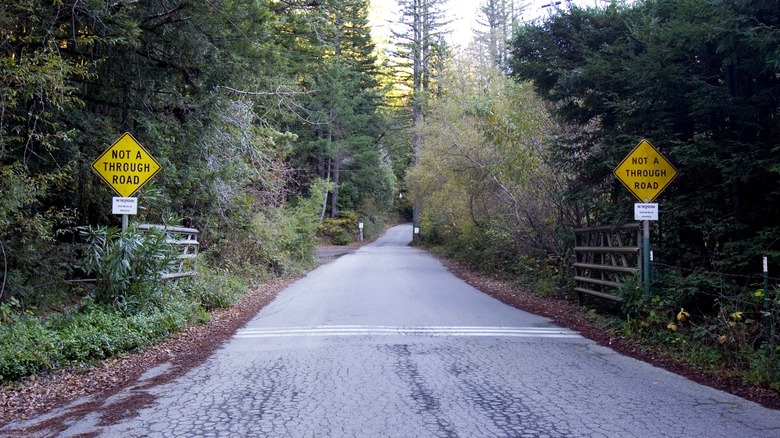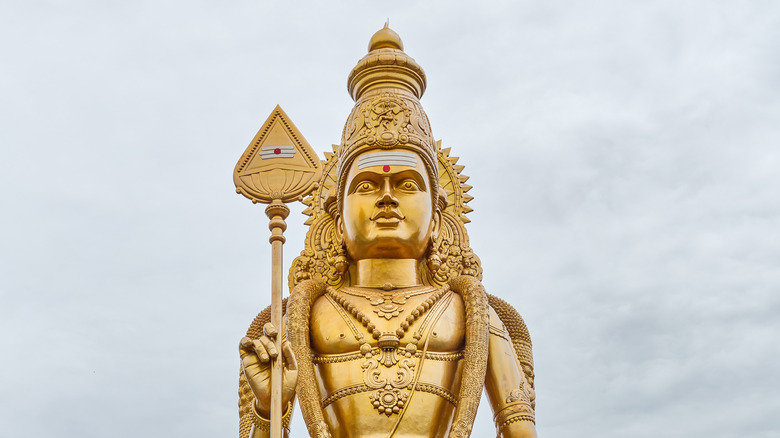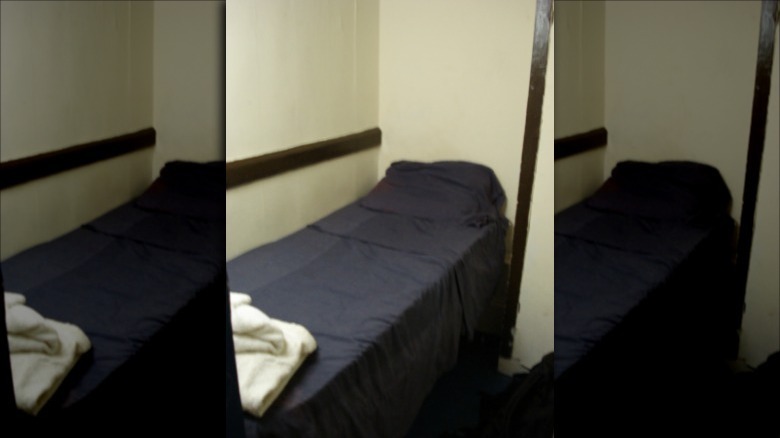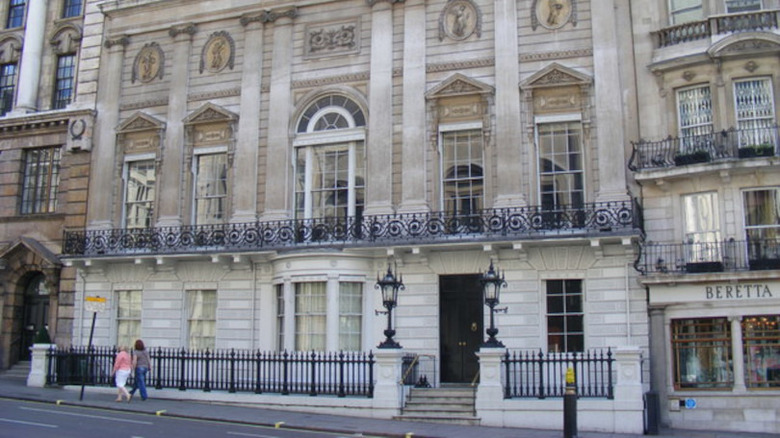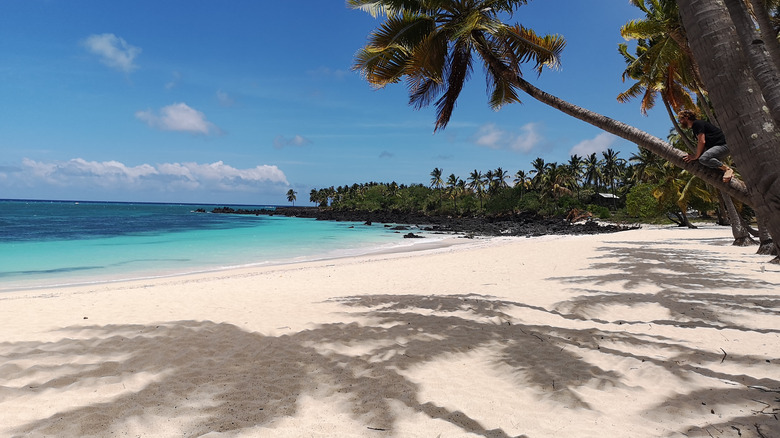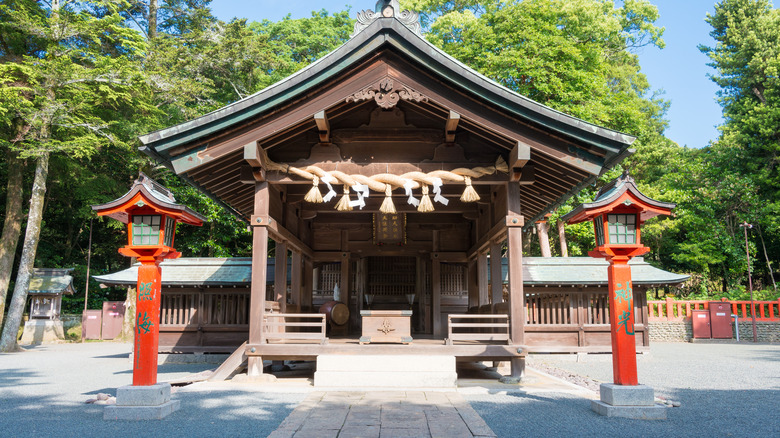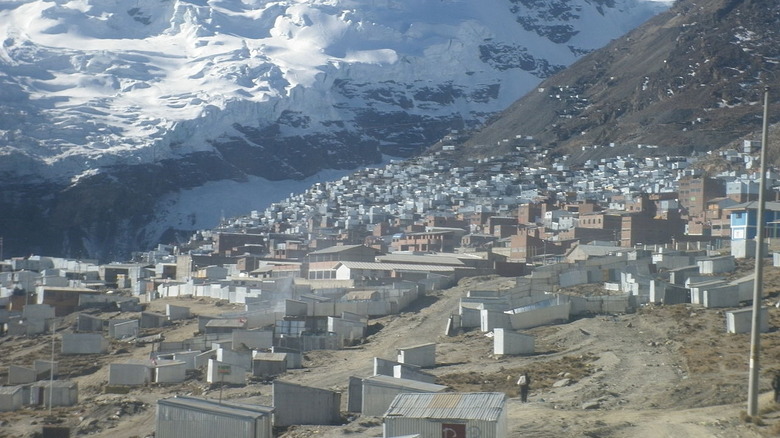Places Around The World Women Are Not Allowed
In case you hadn't noticed, we're well into the 21st century. There was a time when it was easy to imagine that by the 2000s all of the big problems in the world would be solved—racism, war, disease, and inequality. But all you have to do is doomscroll on your phone for a few minutes to figure out that we're nowhere near solving much of anything.
How well we're doing as a species depends a lot on your privilege and perspective. Which is to say, your gender: While things remain pretty great for men in general all over the world, women continue to lag behind in areas such as basic human rights and positions of real authority. Whether we're talking about politics or business, the simple fact is women still have a long way to go when it comes to equal access to power and opportunity.
Add to that list: Equal access to go places. It is surprisingly not uncommon for women to still be barred from entering specific places around the world, often for pretty dubious reasons. Despite the fact that women have made some very public strides—leading countries and Fortune 500 corporations—there are still places around the world trapped in the dark ages. Here are the places around the world women are not allowed.
Mount Athos, Greece: Not even female animals
Designated a World Heritage Site by UNESCO in 1988, Mount Athos is a collection of 20 monasteries situated on the Chalcidice (Khalkidhikí) Peninsula in Greece. According to Britannica, it's run as a semi-autonomous republic, and it's been a sacred site for the Greek Orthodox religion since the 11th century.
It's a spectacularly beautiful place, and it's become a popular tourist destination for those lucky enough to gain access. According to The Guardian, the monasteries allow 100 Orthodox and 10 non-Orthodox pilgrims to come to the monasteries each day. The pilgrims are allowed to stay for three days. But those pilgrims have to be men—women are not allowed within 500 meters of the coastline. In fact, not only are human women not allowed, but even female animals are barred. And in case you were wondering how bad things used to be for women, the original Byzantine charter for the monasteries specifically mentioned the female animals—but doesn't bother specifying human women, because it just assumed they would never be allowed.
Smithsonian Magazine reports that there's both a spiritual and practical reason for the ban: On the one hand, having zero women certainly helps the monks maintain their vows of celibacy. On the other, the whole peninsula is dedicated to the Virgin Mary, who is supposed to be the only female to walk around there. Whatever the reason, the fact remains: If you're a woman, no Mount Athos for you.
Mount Ōmine, Japan: More of a set of loose guidelines
The monastery known as Mount Ōmine in Nara, Japan and the challenging hiking trail that leads to it was built in the 7thcentury by En no Gyoja for the practitioners of the Shugendō religion, known as Yamabushi ("one who bows down in the mountains"). Shugendō is sometimes described as a "mountain religion" and combines elements of Buddhism and Shinto with ancient local beliefs. The trail is more than 50 miles long and is pretty remote and challenging. Which of course makes it a popular place for visitors—as long as they're men.
According to The Boston Globe, the ancient prohibition against women on the mountain comes down to the aesthetic beliefs of the Yamabushi—without women, there is no temptation. But it's worth noting that there is actually almost zero enforcement of this rule. The entrance to the trail has a spare sign in Japanese and English warning that women are not allowed, but there is no barrier and no checkpoint to stop women from walking the trail and ascending the mountain.
In fact, the ban is completely voluntary and relies on people's respect for tradition and religious practices. Women have in fact ignored the ban, and the only consequence they have faced is a stern lecture about respecting other people's beliefs.
Iranian Sports Arenas: An ongoing controversy
No one looks to Iran for guidance on gender equality issues, but their policies in regard to attendance of soccer games are especially bizarre. Although there's been some movement towards change in recent years, Ms. Magazine reports that by and large women are still not allowed to attend sporting events at large stadiums in Iran.
As noted by NPR, the ban was imposed in 1979 after the Iranian revolution put a strictly religious theocracy in charge of the country. Radio Free Europe explains that the ban was based on the idea that mingling the sexes was forbidden, and that women would be exposed to men dressed in improper clothing (e.g., shorts) and might witness some coarse behavior.
This has started to change. As reported by BBC News, in 2019 a woman named Sahar Khodayari was arrested when she defied the law and tried to enter a stadium to watch a game. When she was released, she set herself on fire in front of the local courthouse. The outcry led to increased international pressure, and Iran began to allow a few women into stadiums. But as noted by NPR, many see this as a meaningless gesture, as only a tiny number of tickets are allowed to be sold to women, leading many to see the move as an attempt to "whitewash" Iran's brutal discrimination.
Burning Tree Golf Club, Bethesda: Old-school boy's club
Finding out that far-away places ban women from entering is one thing, but surely in the United States, the land of the free, the idea that women might be banned from some place is surely ridiculous. And it is! Unless the place we're discussing is an old golf club.
As noted by The New York Post, there are still a handful of golf clubs that don't allow women members, and one of the most egregious is Burning Tree Club, located in Bethesda, Maryland. Burning Tree is so dedicated to being female-free it reportedly doesn't even have women's bathrooms. Women are only allowed in for a single three-hour period in December—so they can shop for gifts for their husbands at the club shop.
There are more male-only golf clubs than you might think, though in recent years many of the clubs that traditionally barred women have changed their policies in response to both public pressure and costs—Burning Tree, for example, pays an additional $150,000 a year in taxes because of its discriminatory policies. And as reported by Sports Illustrated, many of the clubs changed policies when the British Open announced it would no longer hold events at clubs that didn't allow women.
This discrimination is legal because the golf clubs are private membership clubs—not open to the public in any way.
The Bohemian Grove: Literally the patriarchy
According to Business Insider, the Bohemian Club was founded in 1872 as a private gentleman's club in San Francisco. It began using a campground called the Bohemian Grove for an annual retreat in 1899. Originally a club for writers and artists seeking a so-called "Bohemian" lifestyle, it's become a super-secret club for wealthy and powerful men—including every Republican president since Calvin Coolidge—but no women. In fact, until a lawsuit in 1978 the Club didn't even hire women as staff.
Adding insult to injury, VIVA Lifestyle & Travel reports that the Bohemian Club has actually conferred honorary memberships on four women over the years—but even these honorary members aren't allowed to attend the annual retreat at Bohemian Grove. Even men find it difficult to join—according to Vanity Fair, the waiting list for a membership can take decades—and costs $25,000 just for the initiation fee.
Modern problems requiring modern solutions: The New York Times reports that the country's powerful women have gotten tired of waiting for their invitations and have created their own parallel club: Belizean Grove. Founded in 1999, Belizean Grove doesn't allow men to join, and specifically works towards a cherished feminist goal: Electing a female president.
Lord Kartikeya Temple: An angry, sexist god
As you might imagine, many of the places that ban women do so due to religious reasons. Religions in general tend to be ancient organizations, so many of their rules were formulated back in more ignorant times when the patriarchy was often totally unchallenged. But times change. In India, for example, a recent Supreme Court ruling forced a Hindu temple with a tradition of barring women between the ages of 10 and 50 (because they might be menstruating) to allow women inside.
The decision was controversial and set off protests. And there are other religious shrines in India that continue to bar women—albeit often unofficially. For example, as reported by The Times of India, the Lord Kartikeya Temple in Pushkar doesn't actually ban women—it simply informs them that they will be cursed terribly if they insist on entering.
In Hindu traditions, Kartikeya is the oldest son of Lord Shiva and the Hindu god of war. The legend is that Shiva had his two sons, Ganesha and Kartikeya, race to determine who would be his heir. When Ganesha won through a clever trick, Kartikeya blamed his mother and declared that if any woman saw him she would be "widowed for seven successive births." This is enough to convince most women to stay away.
The Ewing Annex Hotel: The last of its kind
Chicago once had many male-only "Single Room Occupancy" (SRO) hotels. As explained by The New Republic, these hotels offered a single, small room for a very small amount of money. They sprang up to serve the waves of industrial workers who migrated to the city to find work. Most are gone today, but the Ewing Annex Hotel remains—and it remains off-limits to women due to the specific requirements of its hotel license from the city.
The rooms are incredibly small—just large enough for a twin bed and a few possessions. But they're also incredibly cheap—just $19 a night, or $360 a month. As noted by Block Club Chicago, the Ewing serves a crucial role for the city's poor and homeless. Someone without regular income might not be able to afford an apartment or even a regular hotel for the evening, but a $19 SRO is often within reach. This becomes even more important during the winter when brutal cold hits the city.
As Streetwise Magazine notes, many of the Ewing's residents have struggled with substance abuse problems. But despite popular misconception, most of the residents of the Ewing have lived there for a very long time—sometimes decades. There have been several efforts to shut down hotels like The Ewing, as many believe the tiny, suffocating rooms are unfit for humans—but these efforts have so far failed.
The X-Treme Faser Water Slide: A bizarre anatomy lesson
When we think of places where women might be banned, we tend to think of stern religious types and ancient temples, or stuffy clubs for the Illuminati where old white dudes smoke cigars and chortle about the patriarchy. One place we don't think of, normally? Water parks.
So it might be surprising to learn that there's a specific ride called the X-treme Faser Water Slide at Galaxy Water Slide World in Bavaria, Germany that women are forbidden to ride. According to The Telegraph, the initial banning occurred in 2012 after several women complained of "intimate injuries" as the result of the ride. Fox News reports that people can hit speeds of up to 45 miles per hour on the slide, and that six women suffered "injury to their genital area" as a result. What exactly that could be is a mystery even to gynecological experts, apparently.
The park promised it was developing a bodysuit women could wear in order to enjoy the ride safely, but the park's website still specifies that the X-treme Faser is "only available for men." It seems that mysterious genital injuries due to water slides continue to defy all engineering and medical science.
White's Club: The incredible shrinking men's club
London's Gentlemen's Clubs have a long history going back to the 17th century. As Time explains, these men-only social clubs began in the time before restaurants and nightclubs existed. The rich and powerful needed places where they could host dinners or meet casually, and so exclusive private clubs were formed as an escape from the world, a place where men could relax and hang out, complete with dining rooms—and casinos, since gambling was legal in a private space.
White's is one of the oldest—it was founded in 1693. And it still exists today. And if you're wondering how exclusive it is, Prince Charles is a member. As noted by Business Insider, it still doesn't allow women—and the only woman who has even been allowed inside for a visit is Queen Elizabeth II, who popped in back in 1991 and never went back. That means that 37 St. James Place in Piccadilly, London, is a discreet place in modern London where women cannot go.
White's isn't the only male-only club left. According to The Guardian, there's been a growing movement to push these clubs to admit women, but several, including White's have resisted. The problem may resolve on its own, as the membership at White's has shrunk to about 500.
Mlimadji Beach, Comoros: No bikinis for you
On the island of Grande Comore, part of the nation of Comoros off the eastern coast of Africa, there's a beach that has been open only to men since 2012. According to Global Voices, the beach was closed to women because of "religious reasons" despite the fact that the beach had been open to both genders—to anyone, really—for decades. Local religious leaders made the request.
This isn't entirely surprising. As noted by World Travel Guide, Comoros is an Islamic nation—in 2013, Sunni Islam was named the official religion, banning Shia Islam. Homosexuality is also officially illegal in Comoros. In other words, this is not the sort of place you'd expect to find tolerant, open-minded people.
The effort to close the beach to women wasn't without controversy, as many in the country saw it as an effort to model the Islamic country on organizations like the Taliban, as well as a direct challenge by local religious leaders to the authority of the constitutional state. While you're unlikely to find yourself vacationing in Comoros accidentally, World Travel Guide warns that there are only "a few" hotels of "acceptable" standard there.
Okinoshima Island: Men can visit if they strip naked
If you've visited Okinoshima Island in Japan, we already know two things: One, you're a dude. And two, you've taken a vow of secrecy.
According to The Guardian, the island is home to a shrine to a sea goddess established in the 17th century and has been closed to women for centuries. The shrine was once a site for rituals intended to ensure the safe passage of ships. Priests of the Shinto religion are permitted to go to the island in order to worship at the shrine. Once a year 200 men are allowed to visit to honor the deaths of Japanese sailors during the 1905 war with Russia—but first they must strip naked and go through a "purification ritual" and take nothing from the island—not even pebbles. Travel and Leisure also specifies that the visitors agree to never speak of what they see or experience there.
That last part is one reason why, as noted by Reading Religion, the island is sometimes called the "Island of Mystery." The shrine itself cannot be entered without permission, and even certain words can't be spoken. While there is no official explanation for the ban on female visitors, it's noted that in the Shinto religion blood is considered impure, including menstrual blood.
The La Rinconada gold mine: The worst lottery ever
The La Rinconada gold mine in Peru is both the highest-elevated settlement on the planet at 16,732 feet and perhaps the most exploitative place in the world. People come to this remote hellhole to work for the corporation that owns the mine, Corporación Minera Ananea, for zero pay. At the end of their 30-day shift, they can take home as much raw ore as they can carry—without knowing whether there's actually any gold in the ore.
It's all certainly illegal, but no one's doing anything about it. As noted by Vice, though, the most bizarre aspect of this brutal, unforgiving town (Alluring World reports there is almost zero sanitation, plumbing, or any kind of city services, and most of the trash is simply burned in the streets) is the fact that women aren't allowed to enter the mines, because of superstitions. All they are allowed to do is pan for gold in the waste waters coming off the mountain.
Worse than being barred from the only source of potential income in the area is the fact that many women are exploited at the mine. If panning for gold fails them, Reuters reports many women are forced into sex work—including underage girls.
